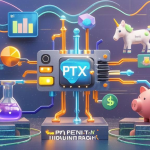Executive Insights on Leveraging AI in Daily Operations
In the modern corporate landscape, the integration of AI has become a pivotal strategy, often guided by consulting firms. But how do top-tier consulting firm executives harness AI in their daily routines? Here are some insights into their usage and techniques.
Enhancing Efficiency with AI
AI serves as a powerful tool to streamline workflows by sorting through a plethora of emails and information, quickly identifying pending tasks. Beyond that, here’s how executives utilize AI:
Creative Companion: AI aids in breaking free from conventional thinking, offering innovative ideas.
Information Integration: AI consolidates information, analyzes data, and reveals trends and causes.
Personal Assistant: AI organizes information and knowledge to provide enhanced services to executives.
Below are the specific shares from AI executives:
AI in Action
Dan Priest from PwC utilizes AI extensively for research purposes, such as analyzing labor productivity, with AI not just providing data but also analyzing and showcasing trends.
Todd Lohr of KPMG finds AI instrumental in understanding market trends and dynamics, aiding in meeting preparations and communication material writing.
Rodney Zemmel from McKinsey sees AI as an exceptional tool for creativity, making it an ideal brainstorming companion for teams.
Common AI Prompt Phrases
Dan Priest simplifies his interactions by asking concise questions, gradually refining the queries, such as having AI identify emails that require attention.
Rodney Zemmel suggests maintaining a continuous “dialogue” with AI, creating “intelligent agents” capable of performing simple tasks.
Matt Barrington at EY creates dedicated AI dialogue “spaces” for different tasks, specifying the desired response style and level of detail in the prompts.
Challenges of Using AI
The greatest challenge, according to Dan Priest, is altering work habits to adapt to AI’s new ways of thinking.
Todd Lohr points to the challenge of integrating disparate data sources.
Matt Barrington mentions keeping up with the pace of technological advancements and verifying the results provided by AI.
Client Focus on AI
Dan Priest has noticed a shift in client inquiries from specific use cases to strategic adjustments within the enterprise.
Rodney Zemmel reveals that clients are eager to learn how AI can seamlessly collaborate with employees and how it can be leveraged to explore new business ventures.
Summary of Insights
Executives emphasize that unlocking AI’s potential requires continuous experimentation, learning, and adaptation, treating AI as a “collaborative partner.” Here’s a synthesis of their experiences:
– Techniques and cases of AI usage
– Common AI prompt phrases and strategies
– Challenges faced when implementing AI
– Shift in client focus from specific use cases to strategic integration and new business opportunities
Below is the compressed content that captures the essence of the article:
Executives skillfully incorporate AI into their daily routines through techniques such as enhancing work efficiency, fostering creativity, integrating information, and personal assistance. Their AI prompt phrases and tactics include refining questions iteratively and setting dialogue “spaces.” Challenges with AI involve altering work habits, consolidating data sources, and keeping pace with technological advancements. Client interests have evolved to focus on strategic adjustments and leveraging AI for employee collaboration and business expansion.
Here is the core content, kept within the word limit, capturing the essence of AI in executive workflows.


